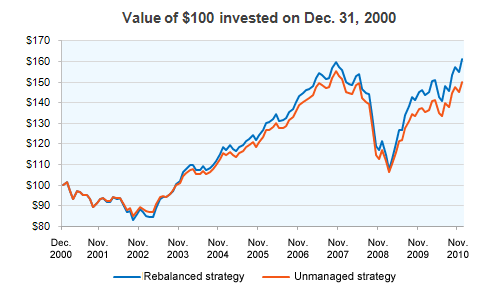Asset Allocation of Bonds
Post on: 13 Апрель, 2015 No Comment

One of the biggest questions facing investors of all ages and risk tolerance are what percentage of their portfolios should be devoted to bonds? It’s actually a very broad question with no one-size-fits-all answer. The best we can do is lay out some general parameters and from there, you’ll need to hone in on the specifics yourself.
Age
The generally accepted consensus is that as you grow older, your exposure to market risk should decline. You don’t want your retirement assets, or even regular assets, to take a big hit in the years when you are supposed to be relaxing. It’s also harder than ever before to get work after you hit your golden years. Thus, you want to be allocating more of your portfolio to bonds, because there is much less volatility in bonds than in stocks .
Risk Tolerance
This is the category most people overlook, or do not examine seriously enough. Investing is a very emotional activity. The more volatile an investment is, the more risk tolerance you need to have in order to endure that volatility. Bonds tend to experience less volatility, and therefore those with less risk tolerance gravitate towards them. Even within the bond market itself, there are varying degrees of risk. Corporate bonds can have higher risk than Treasuries. Most people think they are more risk tolerant than they actually are. The best way to gauge that is to think how you reacted during the financial crisis when the market fell by 55%. Did you panic and sell? Then you have less risk tolerance than you think.
Income Need
The big attraction of bonds is that they are supposed to provide fixed income. Thus, by allocating the correct percentage of your portfolio to bonds, you should be able to calculate the income you’ll receive each year. This is where risk tolerance dovetails with overall strategy. If you need a certain amount of income each year from bonds, but Treasuries aren’t providing that, you will be forced to move further out on the risk curve.
Allocation
The first chore, then, is to allocate what percentage of your total portfolio will be in bonds. Then, in a perfect world, you will be well-diversified across many different kinds of bonds within that asset class itself. You are probably thinking, “Well, that’s just great, but where do I start?”
I can’t tell you how much of your portfolio to allocate to bonds. And I don’t like the arbitrary notion of having it equal to your age or some such nonsense.
However, within the bond asset class itself, we do have a starting point: a fund like the iShares Core Total US Bond Market ETF. The allocations break down as follows: Treasuries (36%), Mortgage-backed (26%), Industrial (12%), Financial (7%), Agencies (6%), Utilities (2%), CMBS (2%), Municipal (1%) and Other (6%).
Now, because quantitative easing has virtually eliminated any yield from Treasuries, most portfolios have had to allocate significant sums into the other sectors. That brings us back to risk tolerance and the need for income. The safer choices these days are short-term municipal bonds (tax exemption lifts the effective yield), and bond funds that focus on well-capitalized and highly solvent financial institutions.
About Lawrence Meyers
Larry is regarded as one of the nation’s experts on alternative consumer finance. He consults for hedge funds and private equity via his Council Member status at Gerson Lehman Group, and as a member of Coleman Research Group’s Executive Forum. He also consults for Credit Access Businesses and Credit Services Organizations in Texas. His Op-Eds and Letters to the Editor have appeared in over two dozen major newspapers. He also brokers financing, strategic investments, and distressed asset purchases between private equity firms and businesses of all stripes. You can reach him at pdlcapital66@gmail.com .
Learn how to generate more income from your portfolio.














